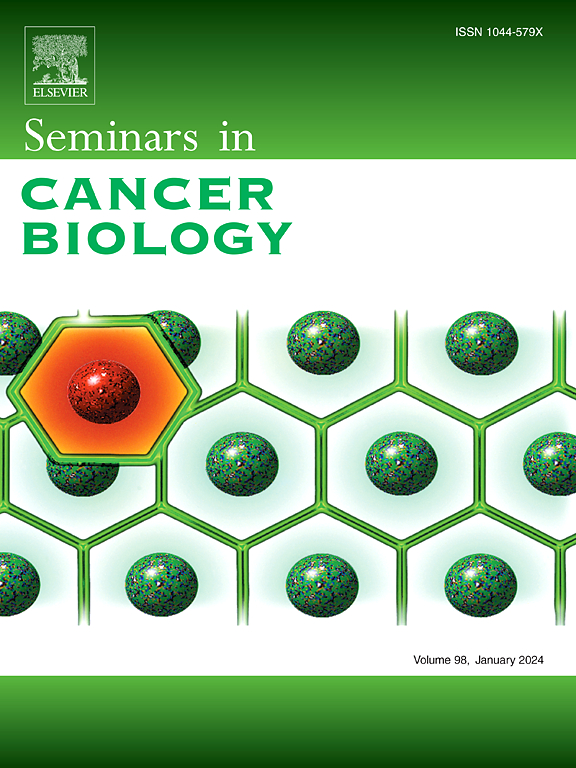The interplay between cell death and senescence in cancer
IF 12.1
1区 医学
Q1 ONCOLOGY
引用次数: 0
Abstract
Cellular senescence is a state of permanent proliferative arrest that occurs in response to DNA damage-inducing endogenous and exogenous stresses, and is often accompanied by dynamic molecular changes such as a senescence-associated secretory phenotype (SASP). Accumulating evidence indicates that age-associated increases in the upstream and downstream signals of regulated cell death, including apoptosis, necroptosis, pyroptosis, and ferroptosis, are closely related to the induction of cellular senescence and its phenotype. Furthermore, elevated levels of pro-inflammatory SASP factors with aging can be both a cause and consequence of several cell death modes, suggesting the reciprocal effects of cellular senescence and cells undergoing regulated cell death. Here, we review the critical molecular pathways of the regulated cell death forms and describe the crosstalk between aging-related signals and cancer. In addition, we discuss how targeting regulated cell death could be harnessed in therapeutic interventions for cancer.
Abbreviations
Abbreviations that are not standard in this field are defined at their first occurrence in the article and are used consistently throughout the article.
癌症中细胞死亡与衰老之间的相互作用。
细胞衰老是一种永久性增殖停滞状态,是对 DNA 损伤诱导的内源性和外源性压力的反应,通常伴随着动态分子变化,如衰老相关分泌表型(SASP)。越来越多的证据表明,与年龄相关的细胞死亡调控上游和下游信号(包括细胞凋亡、坏死、热凋亡和铁凋亡)的增加与细胞衰老及其表型的诱导密切相关。此外,随着衰老而升高的促炎 SASP 因子既可能是多种细胞死亡模式的原因,也可能是其结果,这表明细胞衰老和细胞发生调控性细胞死亡之间存在相互影响。在此,我们回顾了调节性细胞死亡形式的关键分子通路,并描述了衰老相关信号与癌症之间的相互影响。此外,我们还讨论了如何利用调节性细胞死亡进行癌症治疗干预。缩略语:非本领域标准缩写在文章中首次出现时定义,并在全文中统一使用。
本文章由计算机程序翻译,如有差异,请以英文原文为准。
求助全文
约1分钟内获得全文
求助全文
来源期刊

Seminars in cancer biology
医学-肿瘤学
CiteScore
26.80
自引率
4.10%
发文量
347
审稿时长
15.1 weeks
期刊介绍:
Seminars in Cancer Biology (YSCBI) is a specialized review journal that focuses on the field of molecular oncology. Its primary objective is to keep scientists up-to-date with the latest developments in this field.
The journal adopts a thematic approach, dedicating each issue to an important topic of interest to cancer biologists. These topics cover a range of research areas, including the underlying genetic and molecular causes of cellular transformation and cancer, as well as the molecular basis of potential therapies.
To ensure the highest quality and expertise, every issue is supervised by a guest editor or editors who are internationally recognized experts in the respective field. Each issue features approximately eight to twelve authoritative invited reviews that cover various aspects of the chosen subject area.
The ultimate goal of each issue of YSCBI is to offer a cohesive, easily comprehensible, and engaging overview of the selected topic. The journal strives to provide scientists with a coordinated and lively examination of the latest developments in the field of molecular oncology.
 求助内容:
求助内容: 应助结果提醒方式:
应助结果提醒方式:


